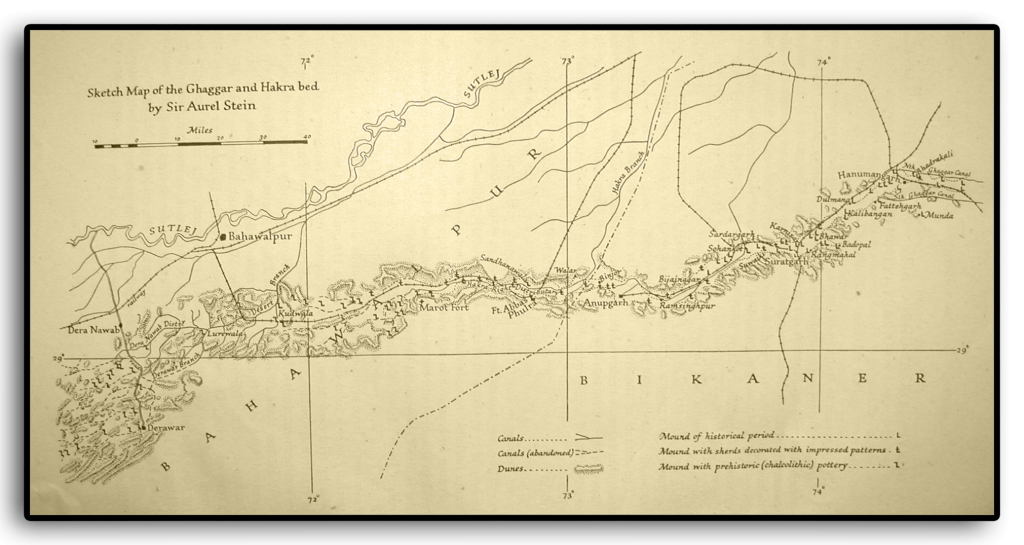Mohenjo-daro and several other Indus settlements were abandoned by their inhabitants around 1900 BCE. In those sites where the habitation continued, the settlement structure changed significantly. Change can also be observed in the economy: the production of certain goods has completely ceased. The long carnelian beads and the square steatite seals were no longer manufactured. There are many explanations for these changes.

Initially, the arrival of an invading external enemy was popular to explain the decline of the Indus Civilisation. However, researchers now believe that the decline can be explained primarily by natural causes.
Convincing arguments have been gathered in favor of rivers drying up and changing their beds as an explanation. Sir Aurel Stein was a pioneer in researching this question. He found that in the heyday of the Indus Civilisation, in addition to the Indus and its tributaries, another river also played a significant role. He identified the river’s ancient bed and determined the time of its drying up.

Climate change is among the natural causes of the decline of the Indus Civilisation. Studying the responses of an ancient civilisation to climate change, and how these responses help their chances of survival, makes research on the Indus Civilisation particularly relevant today.
Source of images:
1: https://commons.wikimedia.org/wiki/File:Archaeological_Ruins_at_Moenjodaro-108221.jpg
2: Stein, A. 1942. “A Survey of Ancient Sites along the ‘Lost’ Sarasvati River.” The Geographical Journal 99 (4):173–182.

